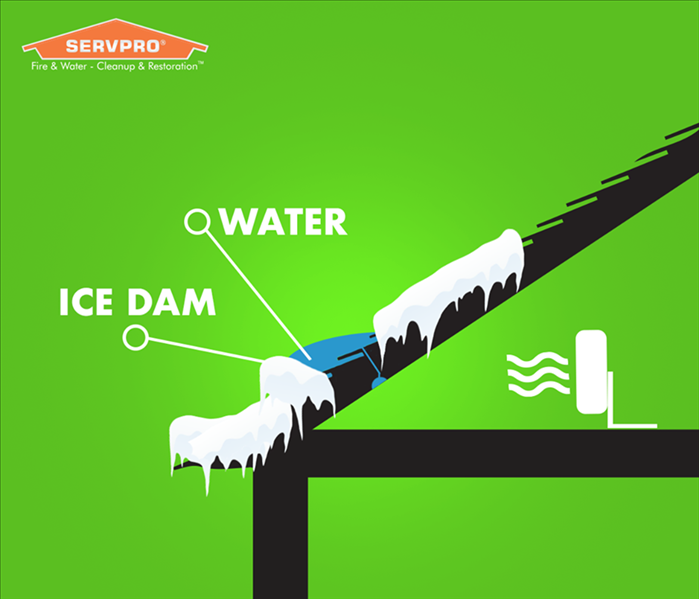Everything You Need to Know About Ice Dams
2/19/2021 (Permalink)
What Is an Ice Dam?
Ice that accumulates on the edge of a roof and keeps the water from melting snow from running off the roof is called an ice dam. These dams can lead to property damage if not addressed promptly.
Problems Caused by Dams
Because the water from melting snow can not drain from the surface of the roof, water may leak into the home. These leaks can cause several problems:
- Damage to ceilings, walls, insulation, and other surfaces
- Mold and mildew growth
- Roof damage
Causes of Dams
The primary cause of ice dams is variable temperatures across the surface of the roof. This variation is caused by heat loss from the home, snow cover on the roof and differing temperatures between higher and lower sections of the roof. If part of the roof surface is above freezing, the snow on the roof will melt. When the water from the melted snow contacts the part of the roof that is below freezing, the water freezes, forming the dam. As additional snow on the roof melts and the water comes in contact with the existing ice, the ice grows larger; however, the dam will only spread to the parts of the roof that are below freezing. This causes the remaining water to pool on the portion of the roof that is above the freezing point.
Repairing Damage
The first step to repairing damage from a dam that forms after a winter storm is to dry out ceilings, walls, and other interior surfaces affected by leaks. A water restoration company in Long Island can assist you with this process. Your homeowners' policy may include ice dam coverage that will compensate you for the cost of repairs.
Energy loss from your home can combine with snow cover on your roof to form an ice dam that can lead to leaks in your roof. Managing the heat loss from your home is the best way to avoid this issue.






 24/7 Emergency Service
24/7 Emergency Service
